 |
 |
 |
| |
PLWH Have Higher levels of Fat Tissue Fibrosis -
INFLAMMATION AND KYNURENINE PATHWAY LINKED TO TYPE
2 DIABETES AND FAT FIBROSIS IN HIV
|
| |
| |
CROI 2022 Feb 11-16
Diana Alba M.D.
University of California San Francisco
San Francisco, CA, USA
program abstract
Background:
People with HIV (PWH) are at increased risk for type 2 diabetes (T2D), which has been linked to persistent inflammation despite ART. PWH have also been reported to have increased adipose tissue fibrosis, which has also been linked to insulin resistance, but the inflammatory pathways most closely linked to incident T2D and adipose tissue fibrosis in this setting remain unclear.
Methods:
To assess immunologic predictors of incident T2D, we randomly sampled CNICS participants without prevalent diabetes but with available plasma after 1 year of suppressive ART and assessed the relationship between 13 plasma biomarkers normalized to the cohort interquartile range (IQR) and incident T2DM with Cox models adjusted for age, natal sex, nadir CD4, and other potential confounders (smoking, IDU, and HCV history). Separately, we assessed the relationship between the same plasma markers and insulin resistance (HOMA-IR) and the fibrosis marker hydroxyproline in subcutaneous adipose tissue (SAT) aspirates in ART-suppressed PWH and those without HIV, all without T2D and frequency matched by HgA1c in the SCOPE cohort.
Results:
Among 843 ART-suppressed CNICS participants, there were 97 incident T2D cases. Median age was 46, 84% were men, and 16% had a history of HCV. Median current and nadir CD4 were 571 and 250. Higher IL-6, IL-18, IP-10, sCD163, suPAR, sTNFR2 and kynurenine-to-tryptophan (KT ratio) were associated with incident T2D (Figure). The adipose tissue sampling study included 41 PWH and 30 sero-negative participants, 68% men, with median values: age, 50; BMI, 28; HgA1c, 5.4. Compared to those without HIV, PWH had higher SAT levels of the fibrosis marker hydroxyproline (P=0.03) and higher plasma KT ratio (P=0.03). While most inflammatory markers predicted HOMA-IR in PWH, KT ratio was the most strongly correlated with adipose tissue hydroxyproline levels (rho: 0.31, P=0.04). Adjustment for KT ratio also significantly attenuated the difference in hydroxyproline levels between people with and without HIV (P=0.35).
Conclusion:
Many inflammatory pathways, including the kynurenine pathway of tryptophan catabolism, predict incident T2D in treated HIV infection. PWH also have abnormally high SAT fibrosis, which is also associated with the kynurenine pathway. As the kynurenine pathway has been linked to Treg expansion and fibrotic pathways in prior studies, these data may suggest a potential role of this pathway in subcutaneous adipose tissue fibrosis and insulin resistance in treated HIV.
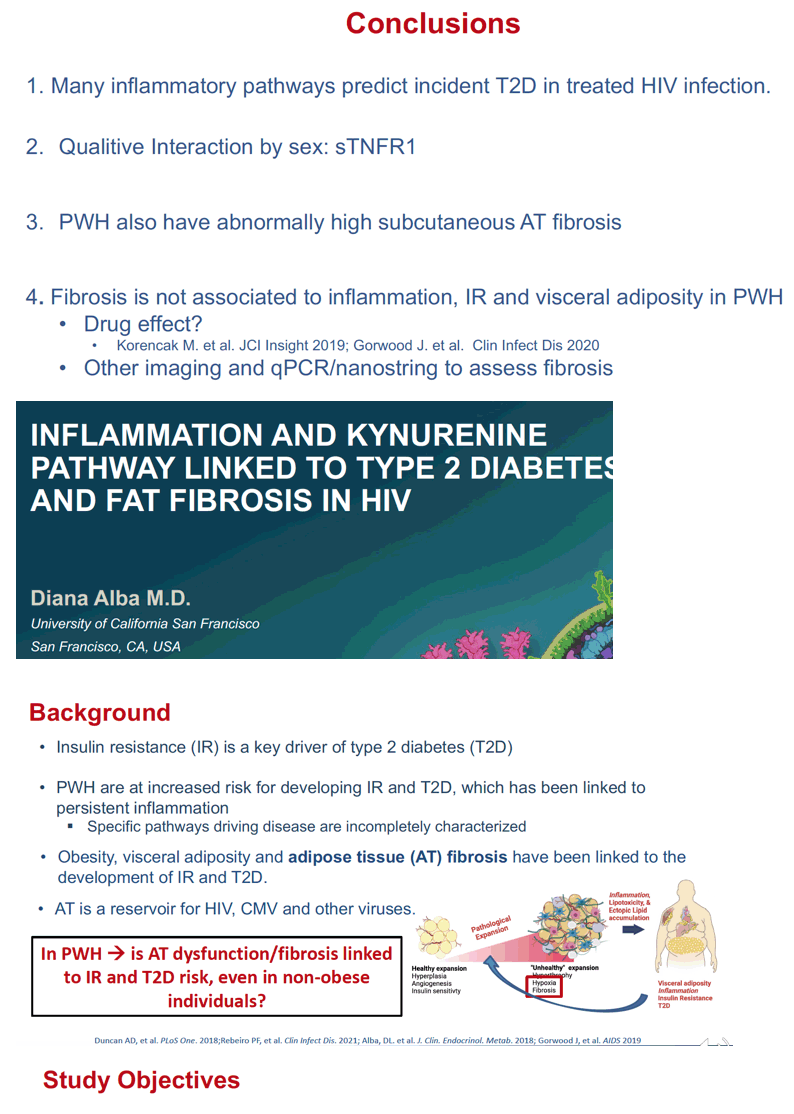

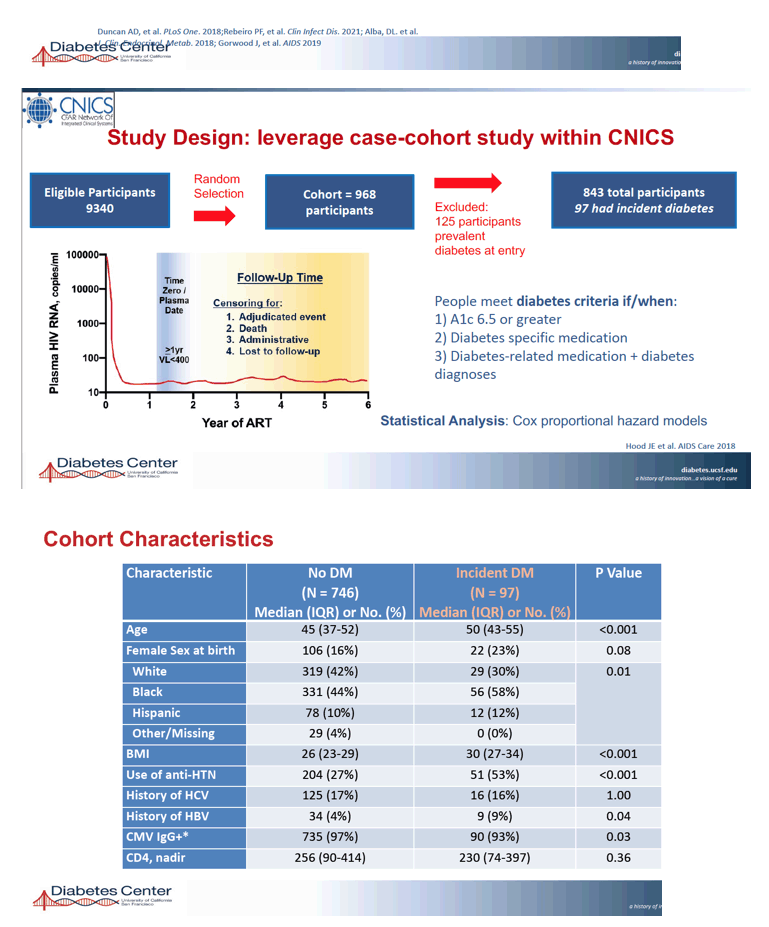
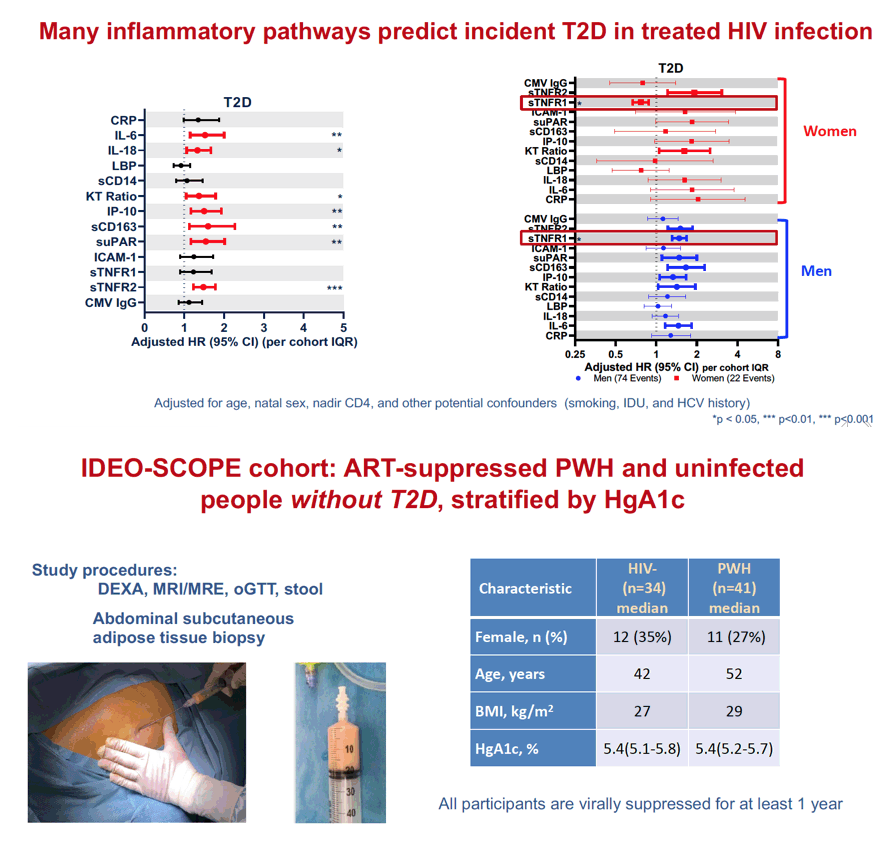
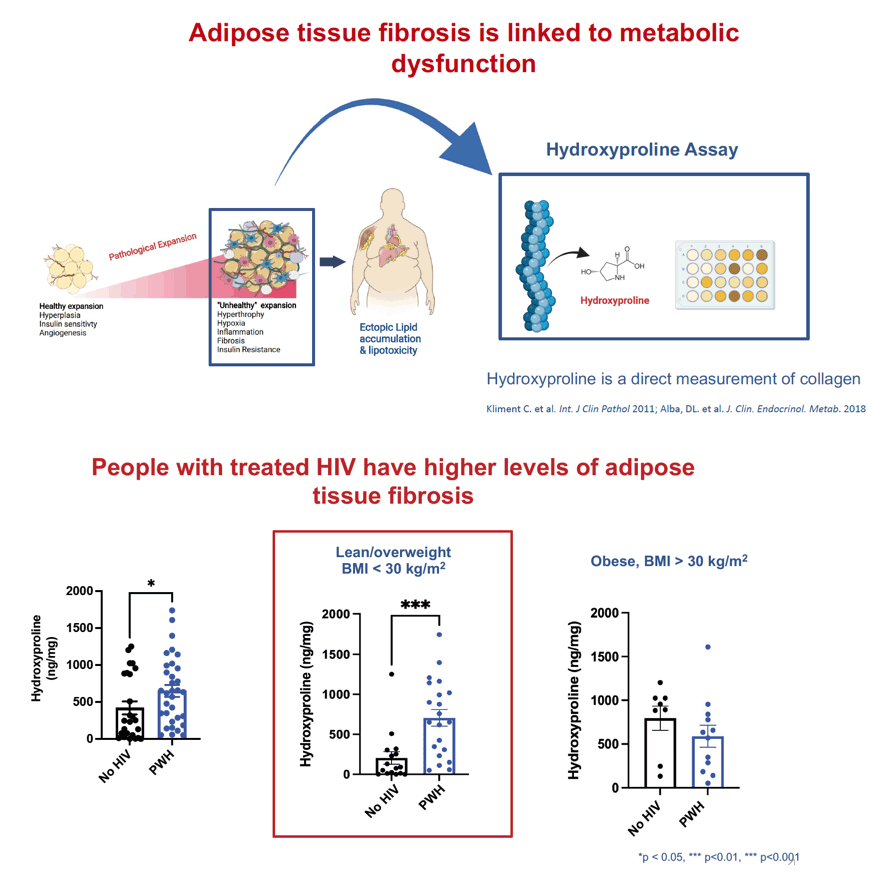
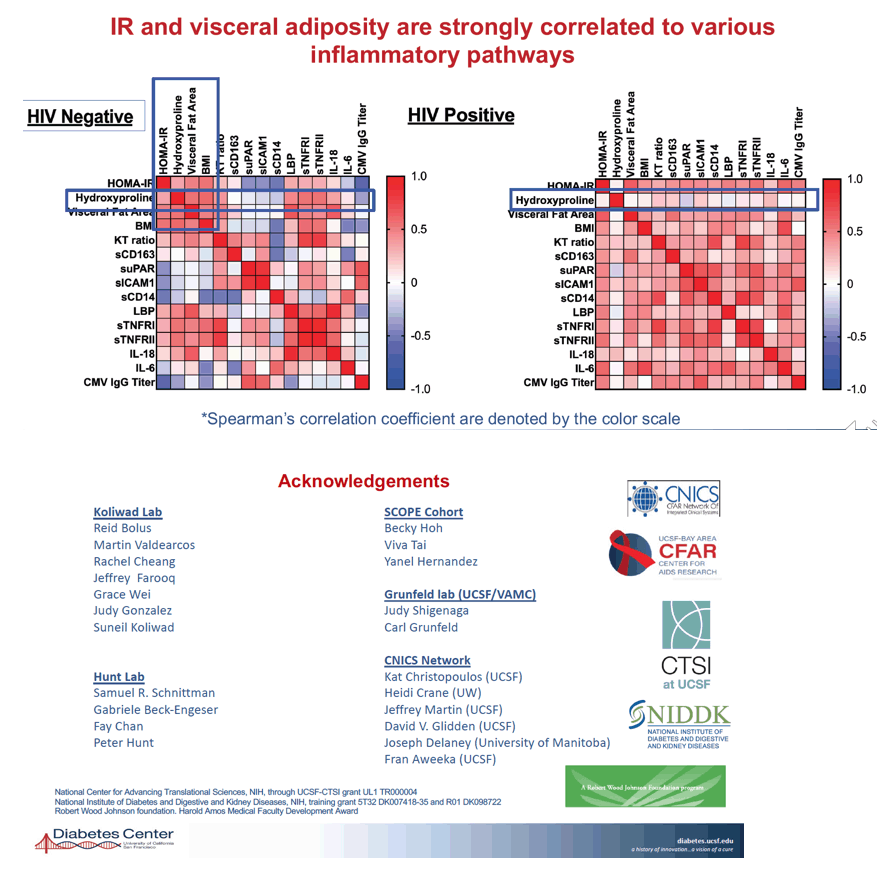
|
| |
|
 |
 |
|
|